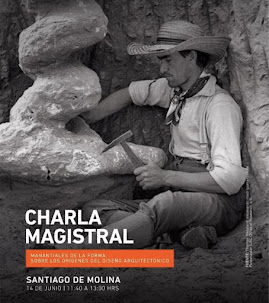La disminución de variedad de música y películas resulta una catástrofe moral insoportable. Otro tanto sucede con la literatura y la poesía. Las tonalidades de la estructura argumental de esas obras son de una pobreza solo similar a la de un estante de snacks en un supermercado. Solo el sabor barbacoa parece diferenciar unos best sellers de otros.
Cada dos semanas una lengua en el mundo dejará de ser hablada para siempre. Se espera que al finalizar este siglo se hayan extinguido la mitad de las lenguas que hoy permiten al ser humano pensar de modo alternativo. Existen una cincuentena de lugares declarados patrimonio mundial que pronto dejarán de ser testigos insobornables de la historia para ser mero polvo. La lista aparentemente solo afecta al pasado, pero cada edificio que se demuele, cada solar que se convierte en edificación obviando su pasado previo, es parte del mismo problema. El borrado del pasado afecta a la esencia misma de los lugares y de su diversidad. Toda falta de relación entre la historia y las particularidades de un lugar hacen de todos ellos el mismo lugar, no ya un no-lugar, sino uno idéntico, carente de misterio y de trasfondo. A menudo se olvida que la protección de la diversidad es integral y que afecta a todas las dimensiones del mundo.
Ante este panorama de extinción incontrolada, ¿qué papel debe jugar la arquitectura? Decir que su labor es puramente pasiva supone una cobarde rendición. Pero decir que la arquitectura puede celebrar la diferencia, acariciar a las minorías amenazadas y brindarles un reducto de bienestar, es ofrecer una respuesta aún más cínica y ruin por cuanto que oculta el problema bajo un falso cosmopolitismo.
Solo dos cosas parecen claras: ni el orangután de Sumatra o el urogallo serán salvados por las buenas intenciones de los arquitectos, ni la solución podrá encontrarse en ningún tipo de monocultivo, sea formal o ideológico.
The shrinking variety of music and films is a moral catastrophe of unbearable proportions. The same holds true for literature and poetry. The tonal range of narrative structures in these works is as impoverished as the snack aisle in a supermarket, where only the barbecue flavor seems to distinguish one bestseller from another.
Every two weeks, a language somewhere in the world will cease to be spoken forever. By the end of this century, it's expected that half of the languages that today allow humans to think in alternative ways will have vanished. Around fifty sites currently designated as world heritage are soon to lose their status as incorruptible witnesses to history and become mere dust. This list seemingly only concerns the past, but each building that’s demolished, each plot of land turned into new construction while ignoring its prior history, is part of the same problem. The erasure of the past affects the very essence of places and their diversity. When the connection between history and the unique qualities of a place is lost, all places become the same place—not just a non-place, but one identical place, devoid of mystery and background. It is often forgotten that the protection of diversity is holistic and affects every dimension of the world.
In the face of this uncontrolled extinction, what role should architecture play? To say that its role is purely passive is a cowardly surrender. But to claim that architecture can celebrate difference, embrace threatened minorities, and offer them a sanctuary of well-being is to provide an even more cynical and disgraceful response, as it conceals the problem beneath a facade of false cosmopolitanism.
Only two things seem clear: neither the Sumatran orangutan nor the capercaillie will be saved by the good intentions of architects, nor will the solution be found in any kind of monoculture, whether formal or ideological.










_-_left_hand_screen,%20imagen%20wikipedia.jpg)




































































































No hay comentarios:
Publicar un comentario